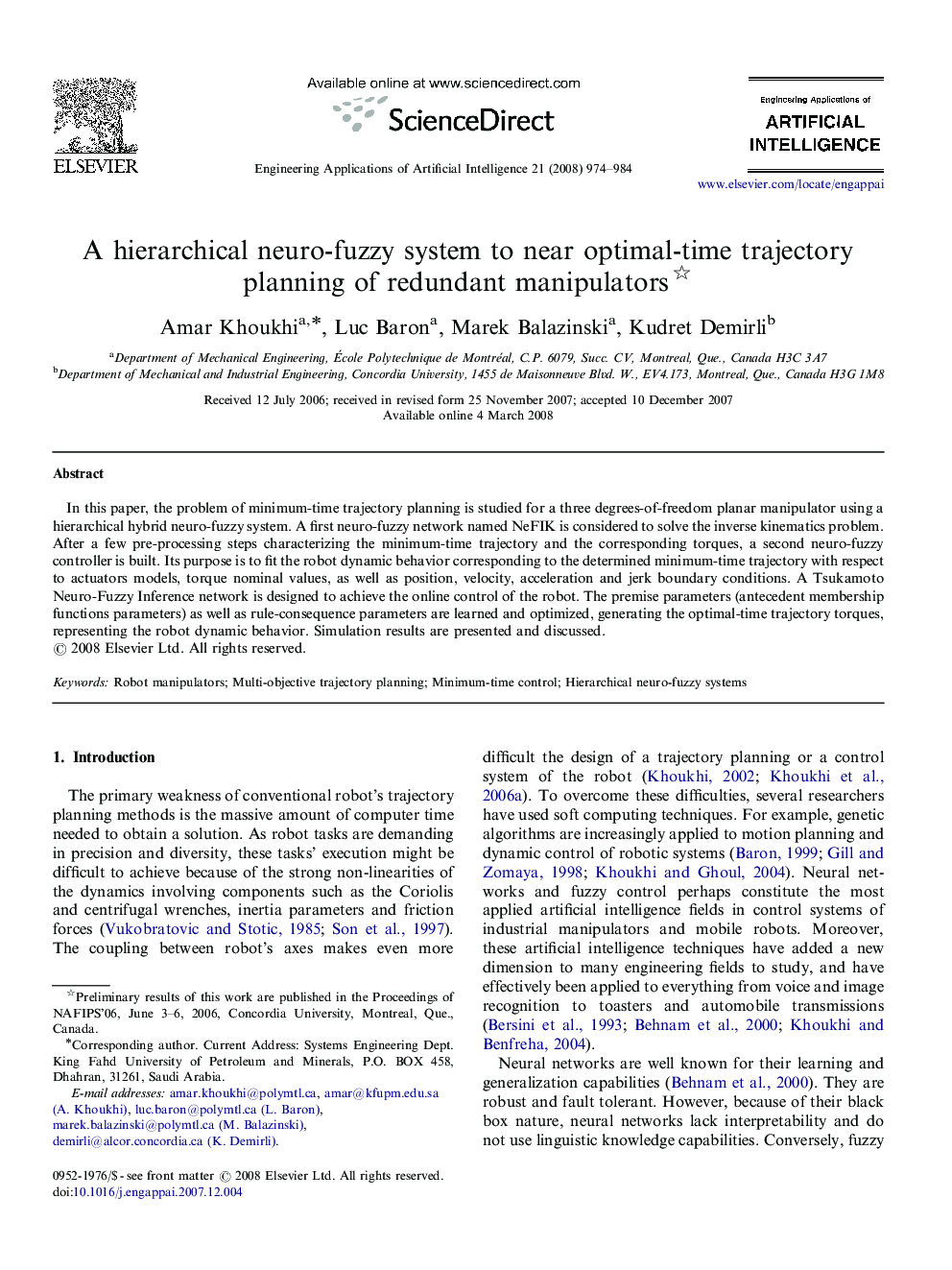| Article ID | Journal | Published Year | Pages | File Type |
|---|---|---|---|---|
| 381695 | Engineering Applications of Artificial Intelligence | 2008 | 11 Pages |
In this paper, the problem of minimum-time trajectory planning is studied for a three degrees-of-freedom planar manipulator using a hierarchical hybrid neuro-fuzzy system. A first neuro-fuzzy network named NeFIK is considered to solve the inverse kinematics problem. After a few pre-processing steps characterizing the minimum-time trajectory and the corresponding torques, a second neuro-fuzzy controller is built. Its purpose is to fit the robot dynamic behavior corresponding to the determined minimum-time trajectory with respect to actuators models, torque nominal values, as well as position, velocity, acceleration and jerk boundary conditions. A Tsukamoto Neuro-Fuzzy Inference network is designed to achieve the online control of the robot. The premise parameters (antecedent membership functions parameters) as well as rule-consequence parameters are learned and optimized, generating the optimal-time trajectory torques, representing the robot dynamic behavior. Simulation results are presented and discussed.
